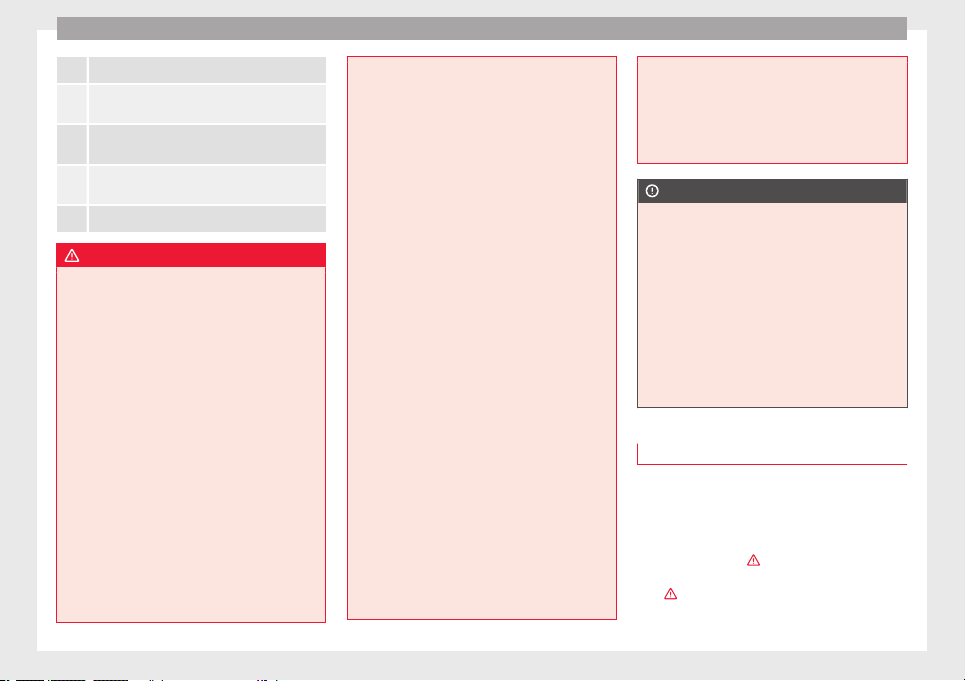Loading ...
Loading ...
Loading ...

Advice
Wear eye protection
Battery acid is extremely corrosive. Wear protec-
tive gloves and eye protection!
Fires, sparks, open flames and smoking are pro-
hibited!
A highly explosive mixture of gases is released
when the battery is under charge.
Keep children away from acid and batteries!
WARNING
Always be aware of the danger of injury and
chemica
l burns as well as the risk of accident
or fire when working on the battery and the
electrical system:
●
Wear eye protection. Protect your eyes,
skin and clothing from acid and particles con-
taining lead.
●
Battery acid is extremely corrosive. Wear
protective gloves and eye protection. Do not
tilt the batteries. This could spill acid through
the vents.
●
Rinse battery acid from eyes immediately
for several minutes with clear water. Then
seek medical care immediately. Neutralise
any acid splashes on the skin or clothing
with a soapy solution, and rinse off with plen-
ty of water. If acid is swallowed by mistake,
consult a doctor immediately.
●
Fires, sparks, open flames and smoking are
prohibited. When handling cables and electri-
cal equipment, avoid causing sparks and
electrostatic charge. Never short the battery
termina
ls. High-energy sparks can cause in-
jury.
●
A highly explosive mixture of gases is re-
leased when the battery is under charge. The
batteries should be charged in a well-ventila-
ted room only.
●
Keep children away from acid and batteries.
●
Before working on the electrical system,
you must switch off the engine, the ignition
and all electrical devices. The negative cable
on the battery must be disconnected. When a
light bulb is changed, you need only switch
off the light.
●
Deactivate the anti-theft alarm by unlock-
ing the vehicle before you disconnect the bat-
tery! The alarm will otherwise be triggered.
●
When disconnecting the battery from the
vehicle on-board network, disconnect first
the negative cable and then the positive ca-
ble.
●
Switch off all electrical devices before re-
connecting the battery. Reconnect first the
positive cable and then the negative cable.
Never reverse the polarity of the connections.
This could cause an electrical fire.
●
Never charge a frozen battery, or one which
has thawed. This could result in explosions
and chemical burns. Always replace a battery
which has frozen. A flat battery can also
freeze at temperatures close to 0°C (+32°F).
●
Ensure that the vent hose is always connec-
ted to the battery.
●
Never use a def
ective battery. This could
cause an explosion. Replace a damaged bat-
tery immediately.
●
For vehicles with the battery in the luggage
compartment: Check that the battery gas
ventilation hose is securely attached.
CAUTION
●
Nev
er dis
connect the battery if the ignition
is switched on or if the engine is running.
This could damage the electrical system or
electronic components.
●
Do not expose the battery to direct sunlight
over a long period of time, as the intense ul-
traviolet radiation can damage the battery
housing.
●
If the vehicle is left standing in cold condi-
tions for a long period, protect the battery
from “freezing”. If it freezes it will be dam-
aged.
Checking the battery electrolyte level
The electrolyte level should be checked regu-
l
arly
in high-mi
leage vehicles, in hot coun-
tries and in older batteries.
–
Open the bonnet and open the battery cov-
er at the front ›››
in safety notes for work
in the en
gine c
omp
artment on page 202
›››
in Symbols and warnings on handling
the b
att
er
y on page 210. For vehicles with
the battery under the spare wheel, open
210
Loading ...
Loading ...
Loading ...